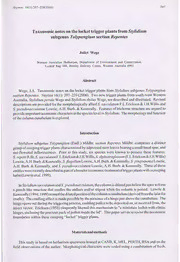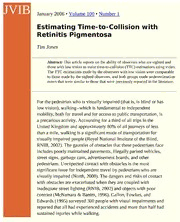
CBDP Technology Transition Handbook 20 Jul 2005 ANS PDF
Preview CBDP Technology Transition Handbook 20 Jul 2005 ANS
CHEMICAL BIOLOGICAL DEFENSE PROGRAM Technology Transition Handbook JOINT CHEMICAL BIOLOGICAL DEFENSE PROGRAM 1 Table of Contents INTRODUCTION.........................................................................................4 BACKGROUND.............................................................................................4 SCOPE............................................................................................................5 RESPONSIBILITIES....................................................................................5 JOINT REQUIREMENTS OFFICE FOR CBRN DEFENSE...................7 JOINT SCIENCE AND TECHNOLOGY OFFICE FOR CHEMICAL AND BIOLOGICAL DEFENSE (JSTO)......................................................8 JOINT PROGRAM EXECUTIVE OFFICE FOR CHEMICAL AND BIOLOGICAL DEFENSE (JPEO-CBD)......................................................9 JOINT TEST AND EVALUATION EXECUTIVE...................................10 TECHNOLOGY TRANSITION PROCESS..............................................11 MANAGEMENT TOOLS FOR TECHNOLOGY TRANSITION...........15 TECHNOLOGY DEVELOPMENT STRATEGY.....................................17 TEST AND EVALUATION STRATEGY..................................................18 TECHNOLOGY TRANSITION AGREEMENT......................................20 TECHNOLOGY READINESS EVALUATION PLAN............................24 TECHNOLOGY TRANSITION ASSESSMENT TOOLS AND PROCESSES.................................................................................................25 TECHNOLOGY READINESS LEVELS...................................................25 MANUFACTURING READINESS LEVELS............................................26 EQUIPMENT METRICS...........................................................................27 TECHNOLOGY READINESS ASSESSMENT.........................................30 1 TECHNOLOGY READINESS EVALUATION........................................32 TRANSITION QUARTERLY REVIEW....................................................32 MEDICAL TRANSITION PROCESS........................................................34 ROLE OF T&E IN TECHNOLOGY TRANSITION...............................36 Appendices APPENDIX A - ASSIGNING TRLS WITHIN THE CBDP .....................38 APPENDIX B – TRL DEFINITIONS.......................................................57 APPENDIX C – SOFTWARE TRL DEFINITIONS.................................60 APPENDIX D – ALGORITHM TRL DEFINITIONS..............................62 APPENDIX E – MEDICAL TRL DEFINITIONS....................................63 APPENDIX F – READINESS VARIABLES..............................................66 APPENDIX G - MANUFACTURING READINESS LEVELS.................72 APPENDIX H - TECHNOLOGY TRANSITION AGREEMENT FORMAT......................................................................................................75 APPENDIX I – RDT&E BUDGET ACTIVITIES.....................................79 APPENDIX J – REFERENCES..................................................................82 APPENDIX K – ACRONYMS & ABBREVIATIONS................................84 2 Figures and Tables Figure 1. JSTO Organization Chart................................................................6 Figure 2. JPEO-CBD Organization Chart......................................................7 Figure 3. CBDP Technology Transition Process/Documentation Timeline. .......................................................................................................................13 Figure 4. Overview of the CBDP Technology Transition Process..............13 Figure 5. CBDP Alignment Process.............................................................15 Figure 6. CBDP Technology Transition Responsibility Matrix..................16 Figure 7. CBDP Technology Pull and Technology Push............................21 Figure 8. CBDP Technology Transition Agreement Process......................22 Figure 9. Key Knowledge Points in the Acquisition Process.......................26 Figure 10. Defense Acquisition Framework.................................................26 Figure 11. Example of Receiver Operating Characteristic (ROC) Curve for a CB sensor......................................................................................................27 Figure 12. Spider Chart.................................................................................30 Figure 13. Technology Readiness Assessment Process...............................31 Table 2. Variable Descriptions for Level of Knowledge...............................47 Table 3. Variable Descriptions for Level of Form/Fit/Function................47 Table 4. Variable Descriptions for Testing..................................................47 Table 5. Variable Descriptions for Environment.........................................48 Table 6. Individual technology assessment example...................................49 Table 7. Variable descriptions for System Testing.......................................49 Table 8. Variable Descriptions for System Integration................................50 Table 9. Variable Descriptions for System Environment.............................50 Table 10. System Assessment Example........................................................51 Table B1. TRL Definitions, Descriptions, and Supporting Information.....57 Table B2. Additional TRL Terms and Definitions......................................59 Table C1. Software TRL Definitions............................................................60 Table D1. Algorithm TRL Definitions.........................................................62 Table E1. Medical TRL Definitions.............................................................63 Table G1. Manufacturing Readiness Level Definitions...............................72 3 Introduction The purpose of this handbook is to provide guidance and establish procedures to facilitate the smooth, effective, and timely transition of technologies and technical information developed by Science and Technology (S&T) projects from the Joint Science and Technology Office (JSTO) to the Joint Program Executive Office for Chemical and Biological Defense (JPEO-CBD) Joint Project Manager (JPM). Transition into acquisition programs/programs of record will be accomplished by "leveraging the best technology available from both government and commercial sources" to "rapidly transition technology into new material systems" to reduce or resolve warfighter capability gaps. A key enabler for evolutionary acquisition and reduced cycle time is to have technology that is sufficiently mature to be fielded in a relatively short time. This document provides guidance for the transition of all defense science and technology base systems and components, Defense Technology Objective (DTO) Programs, and Advanced Concept Technology Demonstrations (ACTD) executed within or transitioned into the Chemical Biological Defense Program (CBDP). It also encompasses S&T programs and unsolicited proposals from other DoD agencies and non-governmental organizations assimilated into the JSTO developmental process. Background Prior to the CBDP Implementation Plan (Under Secretary of Defense for Acquisition Technology and Logistics (USD (AT&L)), April 2003), advisors to the Office of the Secretary of Defense concluded that the CBDP S&T base was not necessarily aligned with the warfighter’s needs, contributing to a perception of too little return on investment. As a result, the use of management incentive tools was encouraged and the development of processes was initiated that would facilitate the transition of technologies out of research and development to the acquisition community. The CBDP Implementation Plan has established the framework for the JPEO-CBD and the JSTO to develop processes to positively effect the transition of technologies from S&T to acquisition in order to meet the needs of the warfighter. This handbook documents those processes and tools necessary to accomplish that goal. 4 Scope This handbook addresses the processes for transition of technology and technical information from the JSTO to the JPEO-CBD, from DoD and other government agencies (i.e. the Defense Advanced Research Projects Agency (DARPA), Department of Homeland Security (DHS), etc.), as well as non-governmental agencies (industry and academia) through the JSTO to JPEO-CBD. This handbook will address: 1) the technology transition process supporting the development of an acquisition strategy by the JPEO-CBD JPM, 2) the development of S&T program transition exit criteria, Technology Readiness Levels (TRL), and the documentation of such in a Technology Transition Agreement (TTA), 3) the process for Technology Readiness Evaluations (TRE) and Technology Readiness Assessments (TRA), and 4) the conduct of the Transition Quarterly Review (TQR). This handbook is intended to be used by the JPMs, the JSTO Capability Area Project Officers (CAPOs), the Joint Test and Evaluation (T&E) Executive, and the Joint Requirements Office for Chemical, Biological, Radiological, and Nuclear Defense (JRO-CBRND) as appropriate for the documentation of T&E capabilities in the transition process and the conduct of the TQR. Responsibilities The Implementation Plan for the Management of the CBDP assigns two agencies with primary responsibility for managing the transition of emerging technologies in the CBDP: the JSTO and the JPEO-CBD. Figures 1 and 2 depict the JSTO and JPEO-CBD organizations. 5 Figure 1. JSTO Organization Chart. Projects are executed under the CAPO within the appropriate S&T Division of the JSTO. Within the JSTO, the Defense Threat Reduction Agency Chemical Biological Transition Directorate (DTRA-CBX) is tasked with managing and facilitating the transition process. The focus of DTRA-CBX is to assess and transition mature Chemical and Biological (CB) technologies to support future acquisition and current product improvement. The JSTO seeks to provide appropriately mature technologies, which can be inserted into JPEO-CBD acquisition programs. Within the JPEO-CBD, the Science, Technology, and Analysis Directorate is responsible for coordinating and facilitating technology transition. For purposes of this document, DTRA-CBX will be referred to as JSTO and the JPEO-CBD Science, Technology, and Analysis Directorate will be referred to as JPEO-CBD hereafter. 6 Figure 2. JPEO-CBD Organization Chart. The following paragraphs outlining technology transition responsibilities are derived from the CBDP Implementation Plan. J O I N T R E Q U I R E M E N T S O F F I C E F O R C B R N D E F E N S E The responsibilities of the JRO-CBRND pertaining to technology transition are as follows: 1) Serve as the principal Joint Staff representative for CBDP issues and focal point for coordination with the Services. 2) Develop/maintain the Chemical, Biological, Radiological, and Nuclear (CBRN) Defense Joint Overarching Operational Concept and Architecture. Integrate relevant portions of other Joint Operational Architectures. 3) Represent the Services and Combatant Commanders in the DoD Joint Capability Integration and Development System (JCIDS) and act as the Joint advocate for coordinating and integrating Services and Combatant Commander 7 approved CBRN defense operational capabilities, to include Homeland Defense and Civil Support requirements. Coordinate and manage the CBRN defense requirements document approval process to include approving Service and Combatant Command validated joint requirements documents along with Service/Combatant Command specific approved annexes, as per the latest version of the Chairman, Joint Chiefs of Staff Instruction (CJCSI) 3170.01 and the Joint Requirements Oversight Council (JROC) Memorandum 163-02 dated 9 September 2002. 4) Coordinate with the Services, JPEO-CBD, JSTO, DARPA and the Joint T&E Executive for the CBDP and the Office of the Director for Operational Test and Evaluation (DOT&E) to ensure joint medical and non-medical CBRN defense materiel requirements are effectively evaluated in developmental test and evaluation (DT&E) and operational test and evaluation (OT&E) in accordance with applicable directives, including Food and Drug Administration (FDA) directives for FDA-regulated materiel. 5) Lead the development of the DoD CBDP Program Objectives Memorandum (POM) with JPEO-CBD and JSTO S&T support J O I N T S C I E N C E A N D T E C H N O L O G Y O F F I C E F O R C H E M I C A L A N D B I O L O G I C A L D E F E N S E ( J S T O ) The responsibilities of the JSTO pertaining to technology transition are as follows: 1) Manage and integrate chemical and biological science and technology (CB S&T) programs. 2) Generate the supporting Receiver Operating Characteristic (ROC) curves and equipment attributes for the spider chart used in the TRA. 3) Develop and execute CB S&T programs approved by Assistant to the Secretary of Defense for Nuclear, Chemical and Biological Defense (ATSD (NBC)) in response to Joint and Service needs and capabilities requirements. 4) Coordinate closely with JPMs to develop the 6.2 and 6.3 S&T programs (see Appendix I for definitions of the Research, Development, Test and Evaluation (RDT&E) budget activities) to ensure S&T meets acquisition program needs. Ensure effective transition between CB S&T programs and JPEO-CBD acquisition programs by conducting TRAs and TREs. Jointly develop CB S&T strategy roadmaps and CB S&T Research, Development and Acquisition (RDA) 8
Description:The list of books you might like

The Sweetest Oblivion (Made Book 1)

Do Epic Shit

The Silent Patient

The 48 Laws of Power
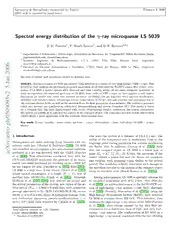
Spectral energy distribution of the gamma-ray microquasar LS 5039
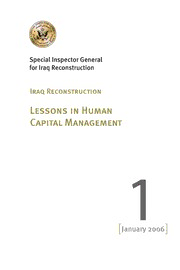
DTIC ADA488741: Iraq Reconstruction: Lessons in Human Capital Management

Bülten No 30 - Ekim 2012
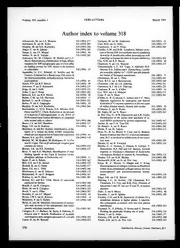
FEBS Letters 1993: Vol 318 Index

Moon Gardening--Ancient and Natural Ways to Grow Healthier, Tastier Food
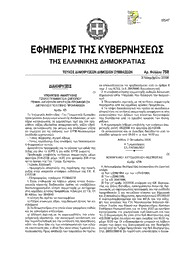
Greek Government Gazette: Part 7, 2006 no. 768
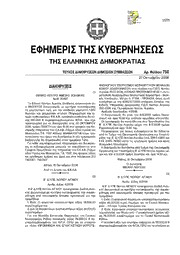
Greek Government Gazette: Part 7, 2006 no. 750

BİR DEVLET ADAMI OLARAK FAİK ALİ OZANSOY
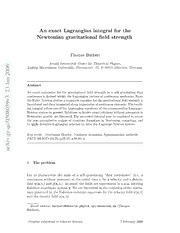
An exact Lagrangian integral for the Newtonian gravitational field strength

Gynäkologie und Geburtshilfe in Frage und Antwort: Fragen und Fallgeschichten - mit Zugang zum Elsevier-Portal
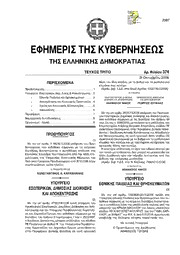
Greek Government Gazette: Part 3, 2006 no. 374

Phytofaunal community of two freshwater lakes of West Bengal, India
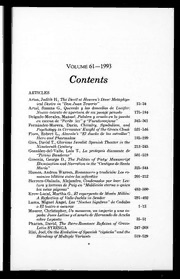
Hispanic Review 1993: Vol 61 Table of Contents
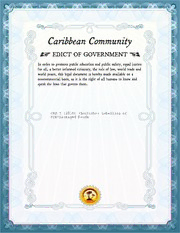
CRS 5: Labelling of Pre-packaged Foods
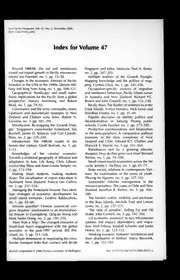
Asia Pacific Viewpoint 2006: Vol 47 Index



